Vesta and curiosities
Vesta, the details of the south pole snatched
Vesta, the brightest asteroid of all, revolves around the Sun in 3.6 terrestrial years and its mean diameter is about 520 km. This huge rock of irregular shape, with no trace of water, has a core composed of iron. The enormous crater at the south pole of Vesta is 460 km wide and 13 km deep. This is the result of a massive collision appears to have torn part of the small planet. Astronomers believe that 5% of meteorites found on Earth come from this huge shock. In July 2011, the Dawn spacecraft to Vesta has come to stay in orbit a year or so and then turn back on its engines to reach a much larger asteroid, Ceres, it will reach in 2015. The journey of the probe Dawn ("Dawn" in English) will enlighten us a little about the birth of our solar system and on planet formation. Dawn will travel a total of 5.1 billion km, 7 months evolve around each asteroid.
Overflights at low altitude are planned, at an altitude of 15 km to Vesta and Ceres to 40 km.
| Vesta (4) | ||
| dimensions | 578 × 560 × 458 km | |
| Rotation period | 5,342 ours | |
| Density | 3,4 g/cm3 | |
| Aphelion | 384,920740×106 km (2,573034 ua) | |
| Perihelion | 321,767047×106 km (2,150878 ua) | |
| Mass | 2,7 × 1020 kg | |
| Esscape speed | 0,18 km/s | |
| Discovered | 29 mars 1807 |
NB: ua (Astronomical Unit = Earth-Sun distance).

Image: The gaping crater 460 km in diameter, the south pole of Vesta is detailed here by the Dawn spacecraft. Photo taken by the probe while it was 5200 km away from Vesta in July 2011. image Credit: NASA, JPL-Caltech, UCLA, MPS, DLR, IDA
The amazing relief of Vesta
The first pictures of the probe descends Vesta Dawn since July 16, 2011 to 5200 km, it already reveals some curiosities. The landscape is riddled with craters Earth surprising, in fact, the asteroid is heavily cratered 530 km in its northern part, while its southern part is quite smooth. The number of craters is very surprising because the density of craters, has not been observed elsewhere, on other planets.
Over long parallel scratches are around Vesta.
Scientists have yet to explain about these brands. What was amazing dig these brands?
Video: NASA, shows the rotation of Vesta.
The asteroid 530 km in diameter turns on itself in 5 hours and 20 minutes.
One can notice the amazing scratch that circle of Vesta.
Articles on the same theme
"The data available on this site may be used provided that the source is duly acknowledged."
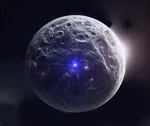 Yarkovsky Effect on Asteroids
Yarkovsky Effect on Asteroids 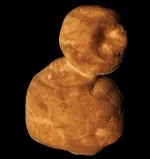 Arrokoth, the
red snowman
Arrokoth, the
red snowman 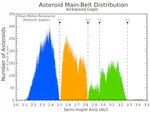 The Kirkwood Gaps in the Main Asteroid Belt
The Kirkwood Gaps in the Main Asteroid Belt 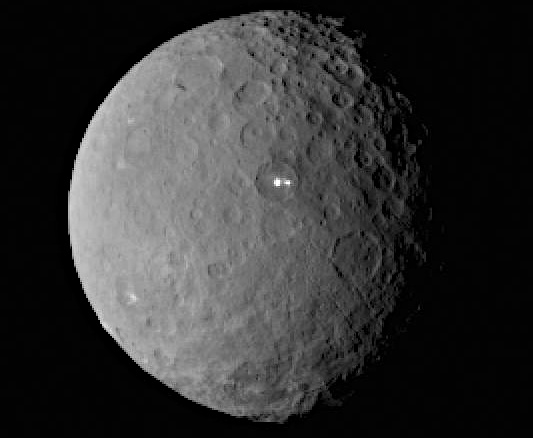 What is the asteroid belt?
What is the asteroid belt?  The Great Comet of 1577 Shattered the Crystal Spheres
The Great Comet of 1577 Shattered the Crystal Spheres 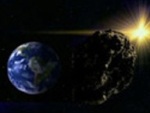 Asteroids, the threat to life...
Asteroids, the threat to life... 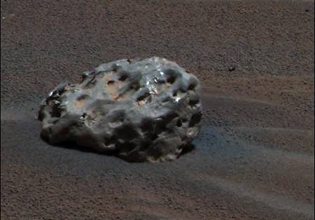 Meteorites, extraterrestrial objects
Meteorites, extraterrestrial objects  Hartley 2 passes by us, every 6 years
Hartley 2 passes by us, every 6 years  Collision between 2 asteroids
Collision between 2 asteroids  2005 YU55: The 400 m Asteroid that Grazed Earth
2005 YU55: The 400 m Asteroid that Grazed Earth  Asteroid Apophis: The Perfect Candidate for a Global Impact?
Asteroid Apophis: The Perfect Candidate for a Global Impact?  The asteroid
Vesta
The asteroid
Vesta  What
is an asteroid?
What
is an asteroid? 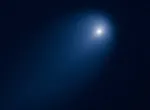 2012 and Comet ISON: Between Promise of Brilliance and Disappointment
2012 and Comet ISON: Between Promise of Brilliance and Disappointment 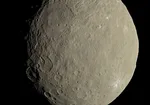 Giants of the Asteroid Belt: Classification by Size
Giants of the Asteroid Belt: Classification by Size  Impact
craters on Earth
Impact
craters on Earth  Online Simulator: Orbits of Asteroids
Online Simulator: Orbits of Asteroids  Online Simulator: Orbits of Near-Earth Asteroids
Online Simulator: Orbits of Near-Earth Asteroids  Rosetta has a date with a comet
Rosetta has a date with a comet  Near-Earth asteroids
Near-Earth asteroids  Asteroid 2009 DD45 sends us a sign
Asteroid 2009 DD45 sends us a sign 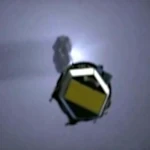 Where does the water on planet Earth come from?
Where does the water on planet Earth come from? 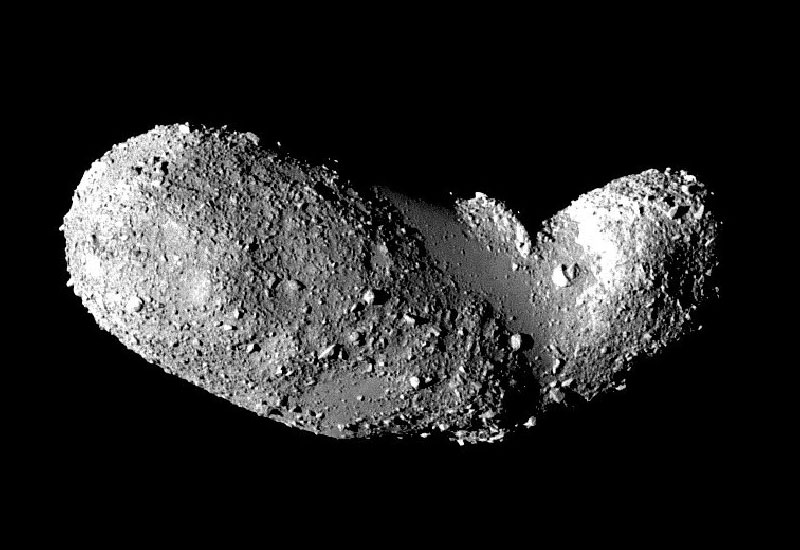 Asteroid
or comet?
Asteroid
or comet? 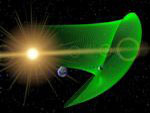 2010 TK7, Earth's Trojan asteroid
2010 TK7, Earth's Trojan asteroid  Turin Scale: A Classification of Impact Risks
Turin Scale: A Classification of Impact Risks  Nice model, the late bombardment
Nice model, the late bombardment 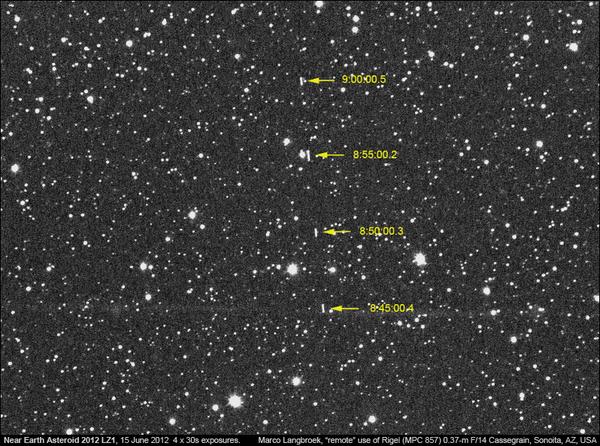 Once again we haven't seen it
Once again we haven't seen it  Comet Lemmon 2013: A Celestial Visitor from the Southern Hemisphere
Comet Lemmon 2013: A Celestial Visitor from the Southern Hemisphere 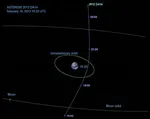 Asteroid 2012 DA14 passed on February 15, 2013
Asteroid 2012 DA14 passed on February 15, 2013  Planetary defense with Didymos and Dimorphos
Planetary defense with Didymos and Dimorphos 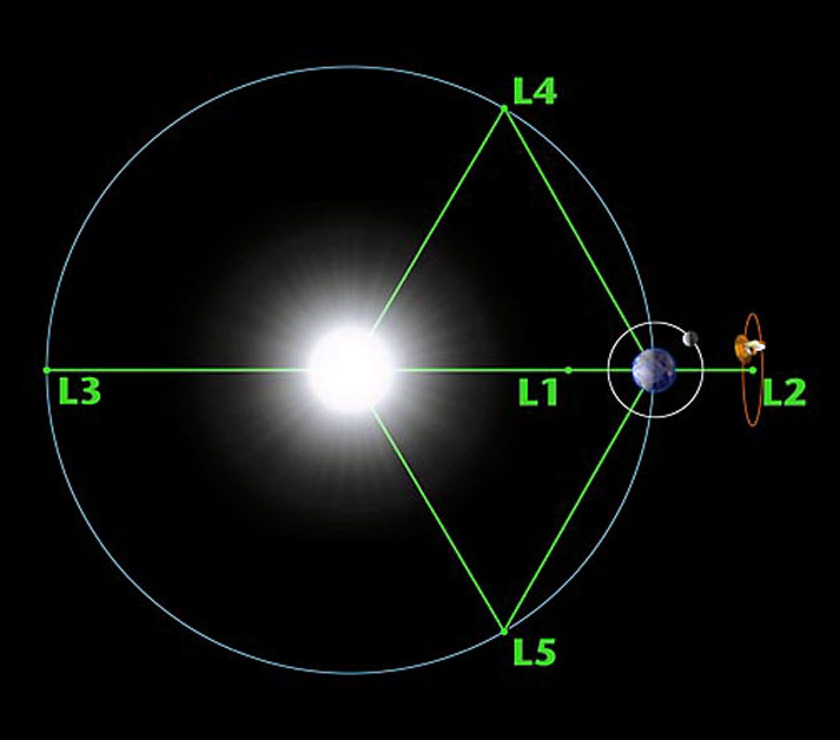 Lagrange points, L1 L2 L3 L4 L5
Lagrange points, L1 L2 L3 L4 L5 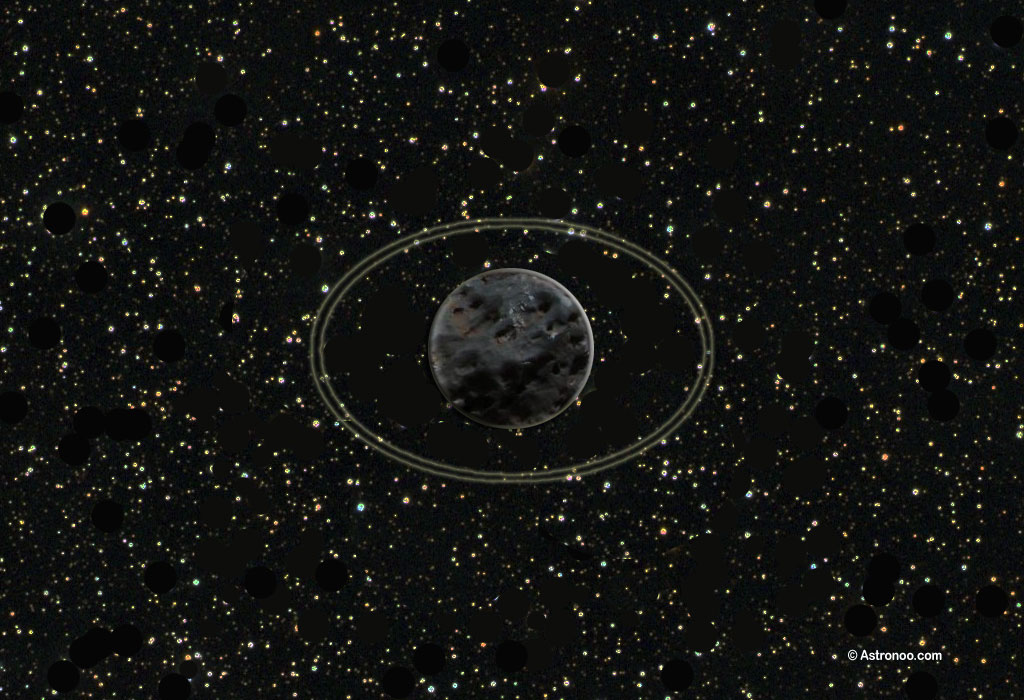 Chariklo and his two amazing rings
Chariklo and his two amazing rings 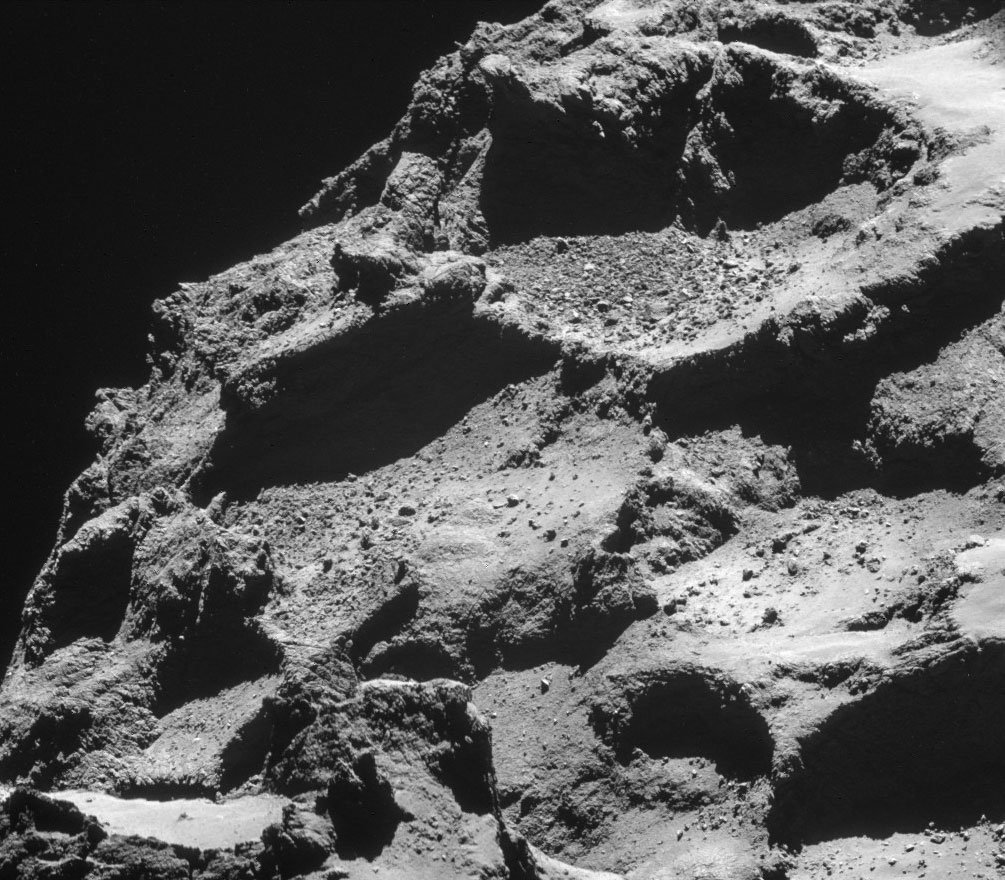 Rosetta
and Philae
Rosetta
and Philae 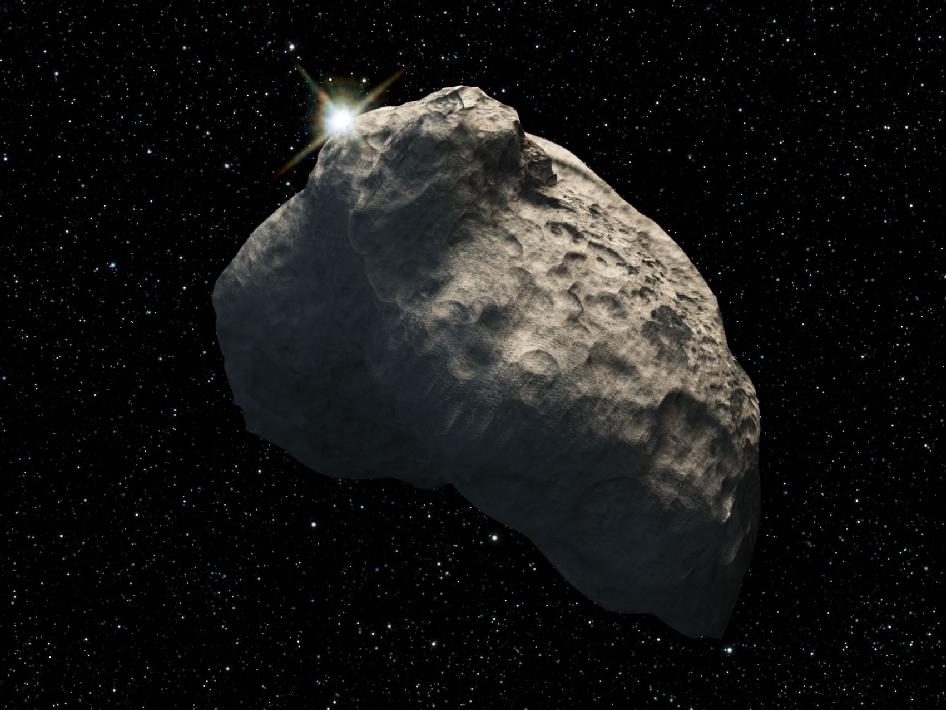 Kuiper Belt Objects
Kuiper Belt Objects  Ceres,
the largest asteroid
Ceres,
the largest asteroid 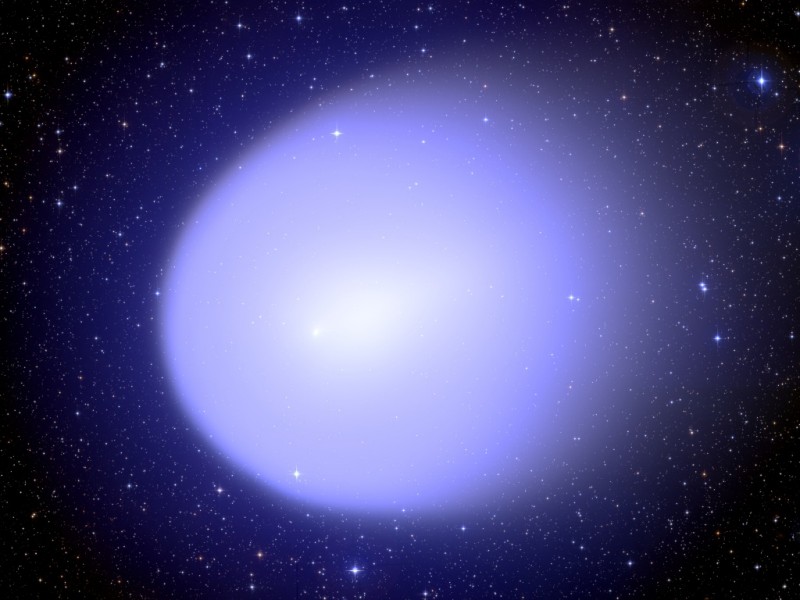 The periodic passage of comets
The periodic passage of comets  Areas
with asteroids and comets
Areas
with asteroids and comets  Orbits of Near-Earth Asteroids: When Asteroids Brush Past Earth
Orbits of Near-Earth Asteroids: When Asteroids Brush Past Earth  Wandering
comets
Wandering
comets 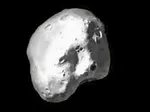 Asteroid Juno: an unknown giant of the solar system
Asteroid Juno: an unknown giant of the solar system 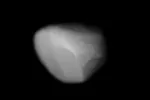 Ganymed (1036): Near-Earth and Mars-crosser
Ganymed (1036): Near-Earth and Mars-crosser 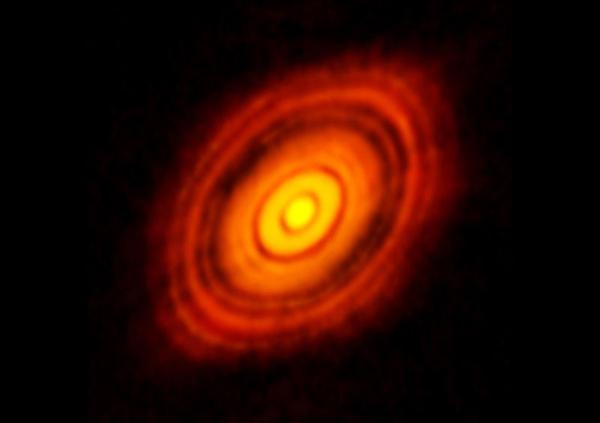 Hell
of the Hadean
Hell
of the Hadean 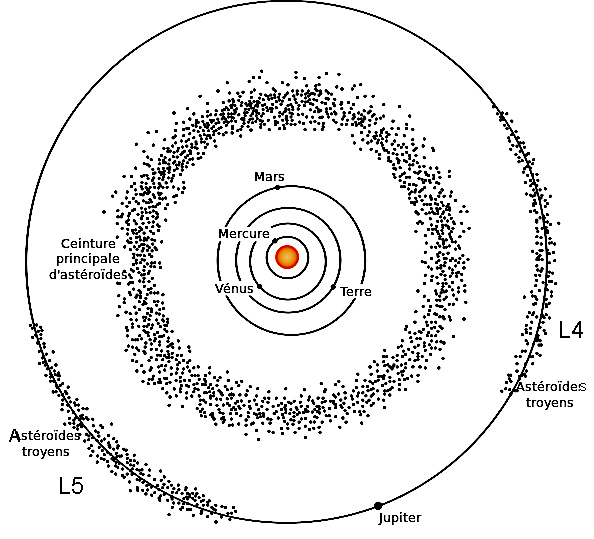 Are there natural satellites of natural satellites?
Are there natural satellites of natural satellites?  Earth's quasi-satellite: 2016 HO3
Earth's quasi-satellite: 2016 HO3